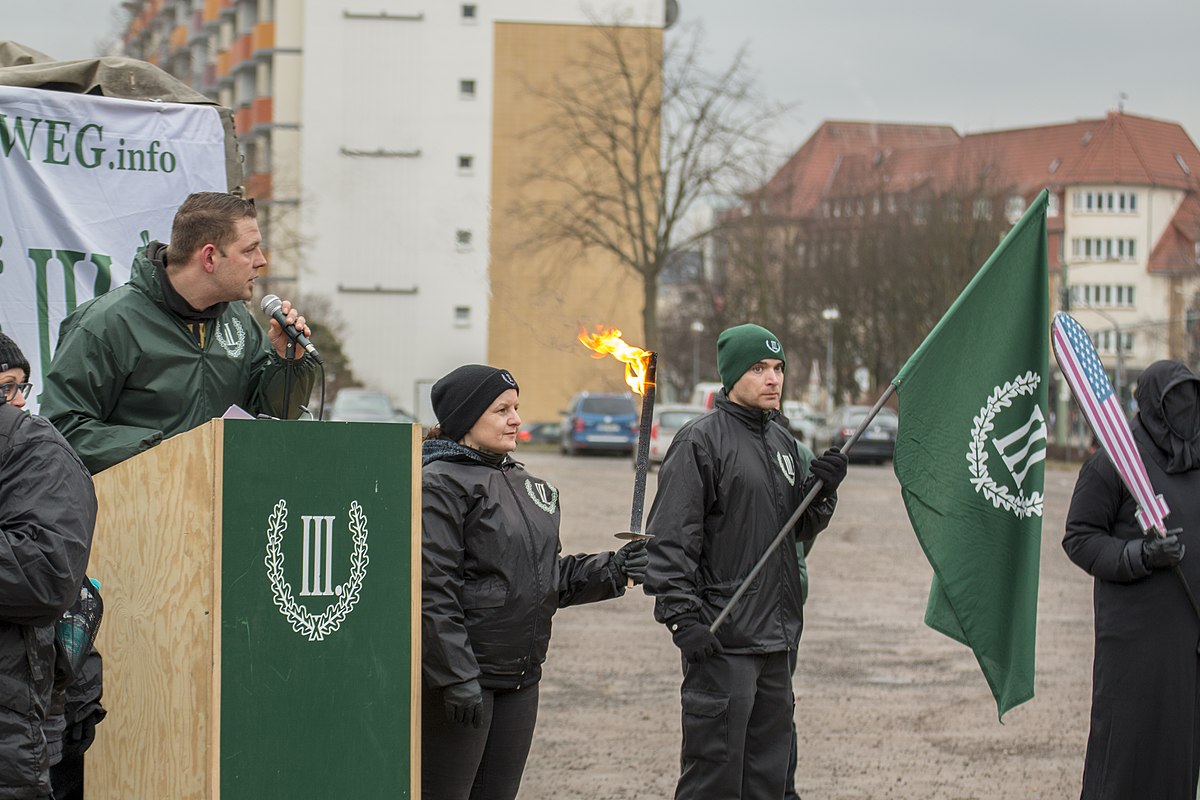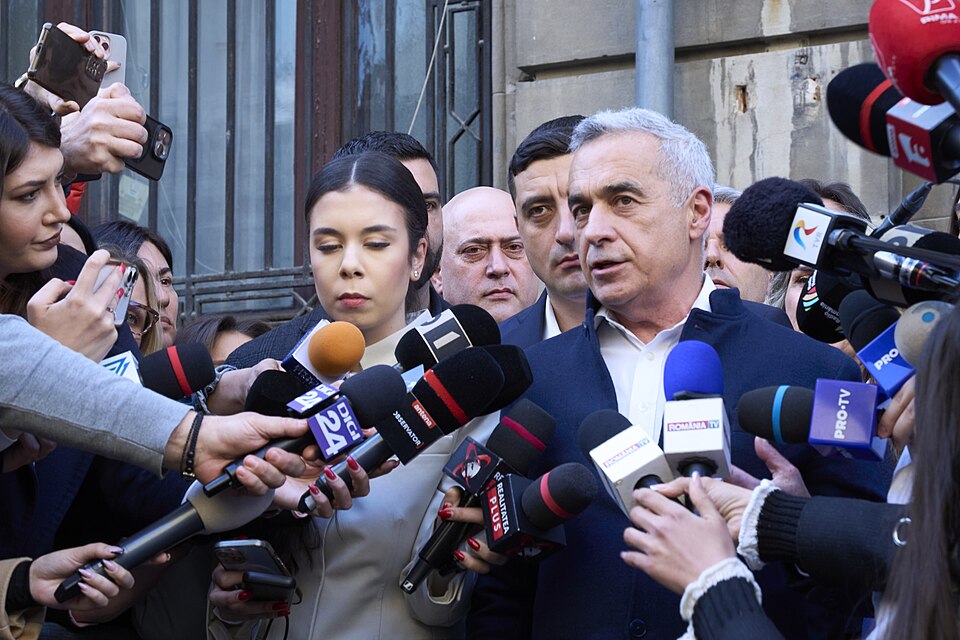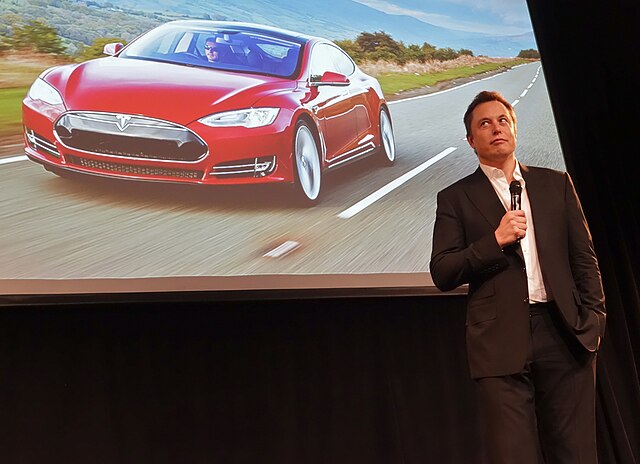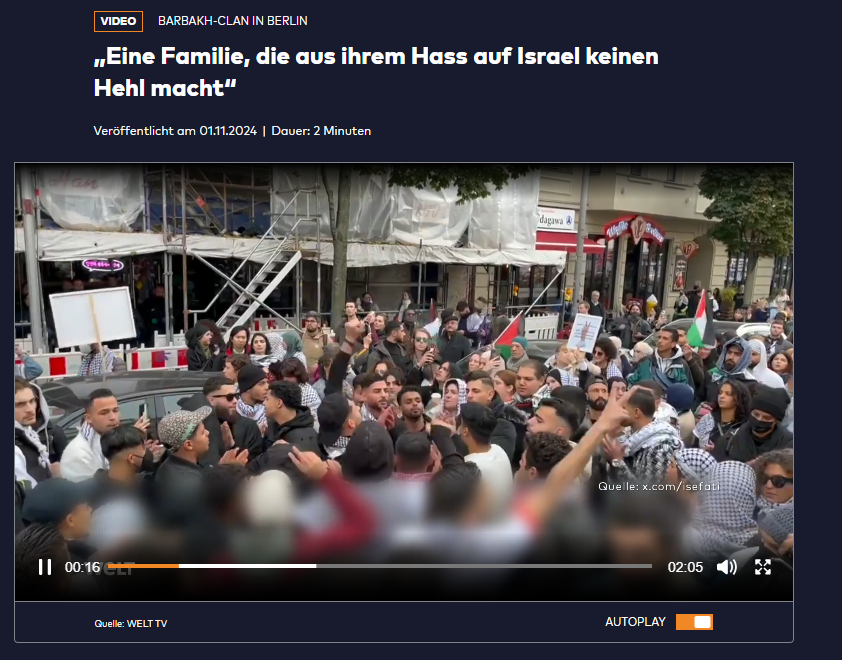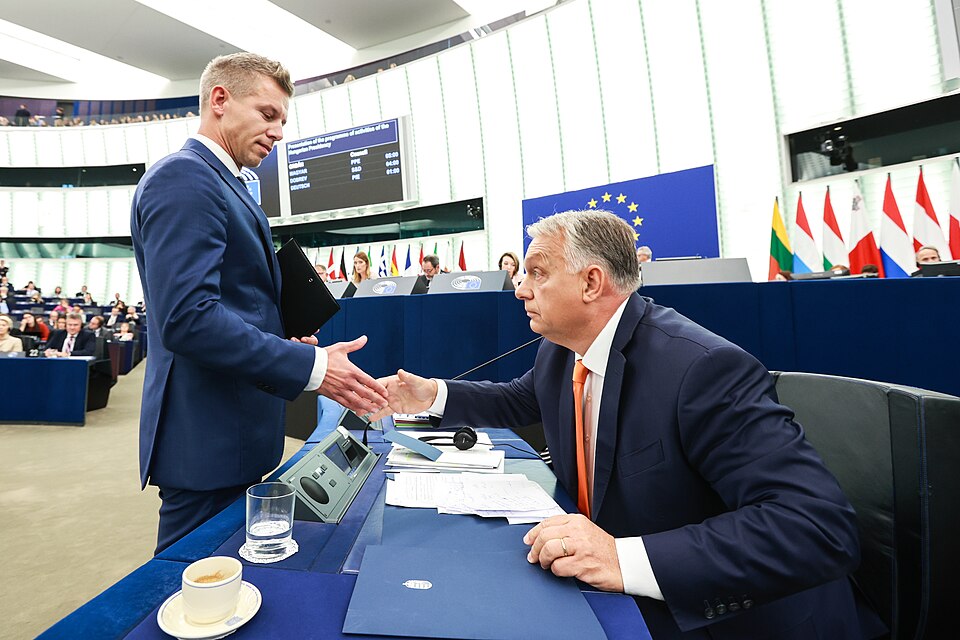In the last months, the far right has seen large advances in Germany, especially with the electoral successes in Saxony and Thuringia. In Berlin, the neo-Nazi group Der Dritte Weg (The Third Way) has been carrying out demonstrations and several high-profile attacks, usually alongside its youth organisation Nationalrevolutionäre Jugend (NRJ), as part of a growing emboldening of the far right.
Der Dritte Weg is a recognised political party, and stands for election in some state-level German elections, where it usually receives between 0.5 and 4% of votes. In 2019 it received 12,756 votes in the European Election. It was founded in 2013 in part by members of other banned neo-Nazi groups, such as Klaus Armstroff who had been part of the National Democratic Party of Germany.
Another member, “Susanne G.”, sent death threats to a Muslim community centre, local politicians and a local refugee aid association. She allegedly had been planning actual attacks against the community centre, politicians and a police station.
Der Dritte Weg gained a new level of popularity during the pandemic when it advocated against the so-called “Corona Diktatur”. Despite its occasional electoral efforts, the party is suspected by the Verfassungsschutz (Germany’s federal domestic intelligence agency) to maintain its electoral wing only because its status as a political party makes it harder to ban than an association.
The group has been especially active in Berlin as of late. It stickered outside of Die Linke politician Ferat Koçak’s house back in April. Koçak, who is a member of the Berlin state parliament and his party’s speaker on antifascism, has been the target of repeated Nazi threats and attacks, including a firebombing of his family home seven years ago which finally went to court last week. They are also reported to be behind an attack in July against anti-fascists at Ostkreuz station where neo-Nazis used pepper spray and quartz-lined gloves, an attack where the lack of police preventative action led Koçak to ponder on Instagram “whether police forces really have an interest in protecting left-wing activists from the right.”
Yet fascist groups such as Der Dritte Weg haven’t been successful in every case. One group of 30 or so neo-Nazis, many of them minors and reportedly from outside of Berlin, attempted to attack the Christopher Street Day pride parade in July, but the police prevented them. They were released shortly afterwards. Likewise, in advance of their state election victories, the AfD attempted to organise a celebration in the predominantly migrant neighbourhood of Neukölln, a clear provocation which backfired in the face of an anti-fascist coalition which organised a counter demonstration. The counter-demonstrators not only succeeded in having the Neukölln party cancelled, but went to Pankow to protest outside the relocated AfD celebrations, highlighting the possibilities of grassroots mobilisations.
Behind these attacks and increasing bravado lies active recruitment, especially of youth. While some foreign commentators go on about a historic divide going back over a thousand years as the main explanation for why the far right is finding success, neo-Nazi groups are actively taking advantage of the economic disenfranchisement of the East; many neo-Nazis from the West have moved East where they see more opportunities for mobilisation.
Claiming that the AfD will only be successful in the East, but stands no chance in the West, misses the fact that the East has until now been the focus of far right mobilisation efforts. While this is not new, several initiatives of neo-Nazi recruitment in Berlin have recently come to light.
The Tagesspiegel reported that on July 13th, 20-30 neo-Nazis gathered in a state park in Lichtenberg for martial arts training, which the police reported included knives, quartz-enforced gloves and pepper spray. According to the Tagesspiegel, at least some of the members were seen wearing Der Dritte Weg shirts, and some local antifascist groups claim that these trainings have been taking place in the park for years.
In Pankow similar trainings have reportedly taken place since at least October 2023, again members from Der Dritte Weg and NRJ are present. The participants meet twice a week in a gym located behind a local school.
Concerningly, when Koçak asked through parliamentary inquiry what information the city had on how widespread these trainings were, Berlin’s State Secretary for the Interior Christian Hochgrebe answered that police were not collecting data which could answer the question. It is quite plausible, if not likely, that there are many more regular training sessions happening that simply have not been reported on.
While these trainings seem designed for some future violent confrontations, their locations – in public parks and gyms behind schools – also suggests that they act as recruitment tools for young potential fascists.
The focus on schools as recruitment grounds came up in another parliamentary inquiry by Koçak, who asked the city’s government about the NRJ’s presence at schools. In Hochgrebe’s response, he stated that “the III. Weg through [the NRJ] have been regularly distributing information material in front of schools in Berlin and its surrounding areas as part of their schoolyard campaign [Schulhofkampagne] since 2023, and publishing posts about it on their homepage.”
Hochgrebe’s response goes on to report that incidents of far right flyers, graffiti, and stickers has been increasing. 2023 saw 57 reported incidents (exactly how they’re reported is unclear) and the first half of 2024 saw 35 incidents ranging from incitement to hatred (Volksverhetzung) to propaganda of a banned right-wing organisation.
While the AfD increases its electoral victories, and shifts the mainstream political parties further towards its positions, Der Dritte Weg is building its cadre of trained, militant neo-Nazis.
While the AfD’s goals are clear, looking at the preparatory steps Der Dritte Weg is taking – increased propaganda output, military-style sports trainings – the question that hangs over it all is clear: preparation for what?
